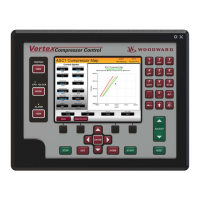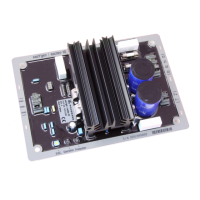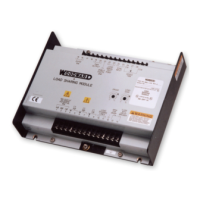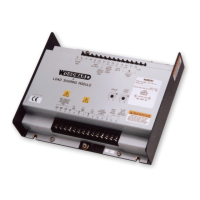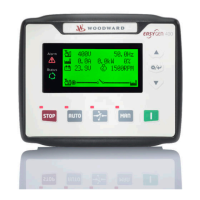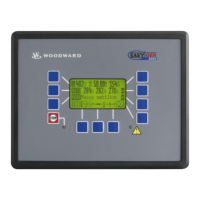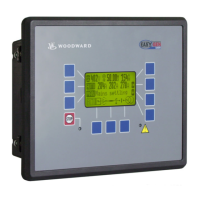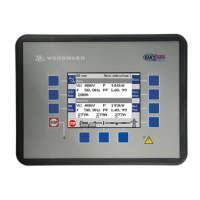Manual 26815 QuickTrip Electro-Hydraulic Trip Block Assembly
Woodward 42
Make sure that there is no contamination anywhe
module that could cause it to malfunction.
14. Re-install the silkscreen wiring diagram cover by placing it onto the hex standoffs, lining up the four
holes in the cover with the four standoffs. The rounded side of the cover should face towards the front
of the QuickTrip unit (away from the conduit port).
15. Secure the cover with the four Philips screws and torque these to 0.3-.5 Nm (2.5-4.5 in-lbf) using a
Philips screwdriver.
16. Re-install the electronics module cover by carefully threading it into the manifold. Thread it as far as
possible by hand. Torque the cover to 136-190 Nm (100-140 ft-lbf) using a spanner wrench (or WW
tool 1013-6603), tightening until the O-ring seal is compressed and the cover is fully seated against
the housing.
17. Re-install the cover clamp and the M5 screws using a 4mm hex key.
Damage to sealing surfaces may result in moisture ingress, fire or
explosion. Take care not to damage the electronics’ cover seal, the
cover surface, the threads, or the QuickTrip housing mating surface
while installing the cover.
Cleaning/Flushing the QuickTrip Hydraulic Cavities
Cleaning/Flushing QuickTrip Hydraulic Cavities procedure:
If QuickTrip is not operating normally or if a contaminant is known to have entered the QuickTrip hydraulic
cavities, the QuickTrip cleaning/flushing procedure may be performed as follows.
1. Eliminate the source of the contamination either by polishing the hydraulic supply or by replacing the
hydraulic supply with clean hydraulic oil.
2. Flow clean hydraulic oil through the QuickTrip at a maximum pressure of 500 psi, while manually
stroking the valves using the Manual Stroking procedures above. Make sure to stroke all valves to an
open position in order to ensure maximum oil flow through QuickTrip, then close the valves and
repeat the process several times.
3. If the above procedure has been performed several times and QuickTrip still does not operate
normally or the contaminant has not been flushed from the system, the valve may require repair.
Consult the Troubleshooting and Service Options sections of this manual.
Troubleshooting
General
The following troubleshooting guide will help you isolate trouble with the QuickTrip valve electronics
modules, solenoids, wiring, and system problems. Troubleshooting beyond this level is recommended
ONLY when complete facility control testing is available.
Troubleshooting Procedure
This table is a general guide for isolating system problems. In general, most problems are a result of
incorrect wiring or installation practices. Make sure that the system wiring, input/output connections,
controls and contacts are correct and in good working order. Complete the checks in order. Each check
assumes that the preceding checks have been completed and any problems have been corrected.

